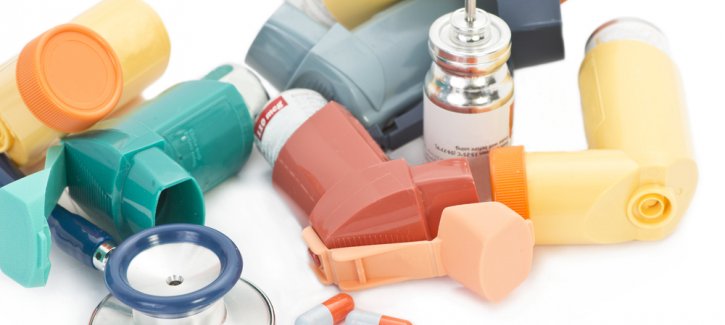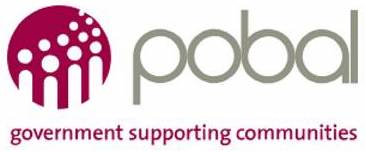
The Government has recommended that certain groups must continue to ‘cocoon’ throughout Phase Two. Cocooning protects people who are extremely medically vulnerable if they contract coronavirus. It does not mean you are prone to contracting it, but that the symptoms may be more severe if you do.
What is cocooning and what does it involve?
Cocooning means that if you are categorised as extremely medically vulnerable, you should stay at home as much as possible and avoid face-to-face contact with others. Even within your home, you should minimise all non-essential contact with other members of your household. It is essential to your health – and your life – that you follow this advice strictly. Information on how to sucessfully cocoon is avialable on the HSE website.
Family, carers, neighbours and our public services will help ensure you have the support you need. For more information on cocooning supports click here.
Important for our members and supporters:
Included in the group of extremely medically vulnerable people who are advised to cocoon themselves are people who have severe respiratory conditions including cystic fibrosis, severe asthma and severe COPD. Click here to see the full list from the HSE.
Those who have severe asthma and become unwell due to COVID-19 should inform their GP or hospital asthma team or hospital asthma nurse over the phone.
Our medical advisory group has put together an explanation of how ‘severe asthma’ is defined, available in full at the end of this webpage. This information is subject to change as more information about coronavirus becomes available.
Advice for ‘Vulnerable’ Health Care Workers
As per the government guidance, healthcare workers with severe asthma and/or severe COPD workers should not be at work – See guidance from the Department of Health . The health care worker can provide their manager with a letter from their treating specialist confirming their ‘Vulnerable HCW’ status. There may be requirement for Occupational Health input.

Guidelines for people with severe asthma and COPD: Visiting and Shopping
June 8 marks the beginning of Phase Two which means that people with severe asthma and severe COPD will be able to have visitors in their home, visit others in their home, and do their own shopping for the first time in months. This can be both an exciting and daunting time. The following resources have been prepared by the Asthma Society to ensure medically vulnerable people are prepared to meet people and head out during COVID-19.
What is severe asthma and do I have it?
Severe asthma, a high-risk form of asthma, can be defined in different ways.
Severe asthma is defined by experts as asthma that requires treatment with high-dose inhaled corticosteroids plus a second controller and/or systemic corticosteroids to prevent it from becoming ‘uncontrolled’ or that remains ‘uncontrolled’ despite this therapy. Patients with severe asthma are usually under the care of specialist centres and may be on long-term injection (“biological”) therapy.
Experts consider severe asthma to be present in an adult or child in any of the following 4 cases (numbers do not indicate severity of asthma):
You are prescribed a long term injection (“Biological”) treatment for your asthma, e.g. “Cinqaero” (reslizumab), “Fasenra” (benralizumab), “Nucala” (mepolizumab) or “Xolair” (omalizumab)
OR
You have ever ended up in intensive care with your asthma
OR
You had to stay overnight in an Emergency Department or were admitted to hospital with asthma in the past 12 months
OR
You are prescribed any of the medications listed below (to prevent your asthma from becoming ‘uncontrolled’ or that remains ‘uncontrolled’ despite this therapy):
High-strength versions of an inhalers, specifically:
- The high-strength version of an inhaler called “Aerivio” (50/500) one puff twice daily
- The high-strength version of an inhaler called “Airflusal” (50/500) one puff twice daily
- The high-strength version of an inhaler called “Bufomix” (320/9) two puffs twice daily
- The high-strength version of an inhaler called “DuoResp” (320/9) two puffs twice daily
- The high-strength version of an inhaler called “Flutiform” (250/10) two puffs twice daily
- The high-strength version of an inhaler called “Fostair” (200/6) two puffs twice daily
- The high-strength version of an inhaler called “Relvar” (184/22) one puff daily
- The high-strength version of an inhaler called “Sereflo” (25/250) two puffs twice daily
- The high-strength version of an inhaler called “Seretide” (500/50) one puff twice daily or (250/25) two puffs twice daily
- The high-strength version of an inhaler called “Sirdupla” (25/250) two puffs twice daily
- The high-strength version of an inhaler called “Symbicort” (400/12) two puffs twice daily
Long term maintenance steroid tablets or steroid liquids, specifically:
- A long term maintenance steroid tablet or steroid liquid for asthma called “Deltacortril”
- A long term maintenance steroid tablet or steroid liquid for asthma called “Prednesol” (prednisolone)
- Cocooning is advisable for any asthma patient who is not on long term maintenance steroids BUT HAS HAD FOUR OR MORE COURSES OF STEROID TABLETS/LIQUID IN THE PAST 12 MONTHS AS RESCUE TREATMENT FOR AN ASTHMA FLARE-UP
Long term maintenance medicine, specifically:
- A long term maintenance medicine, often prescribed to be taken on a Monday, Wednesday and Friday, or once every day, called Azithromycin
- A long term maintenance medicine, often prescribed to be taken on a Monday, Wednesday and Friday, or once every day, called Zithromax
Combination of a tablet and high strength version of an inhaled steroid, specifically:
- The combination of a tablet called “Montelair” or “Montelukast” or “Singulair”
AND
a high strength version of an inhaled steroid.
Examples of a high strength version of an inhaled steroid include:
- two puffs twice daily of “Alvesco” (the 80 mcg strength) or one puff twice daily of “Alvesco” (the 160 mcg strength)
- two puffs twice daily of “Asmanex” (the 200 mcg strength)
- two puffs twice daily of “Beclazone” (the 250 mcg strength)
- two puffs twice daily of “Becotide” (the 250 mcg strength)
- two puffs twice daily of “Flixotide” (the 250 mcg strength) or one puff twice daily of “Flixotide” (the 500 mcg strength)
- two puffs twice daily of ”Novolizer Budesonide” (the 400 mcg strength)
- two puffs twice daily of “Pulmicort” (the 400 mcg strength)
Important! Please note:
*Currently, there is no scientific literature that patients who have severe asthma are at a greater risk of developing more serious complications from COVID-19.
Medications are listed in alphabetical order; the order of the medications does not suggest any clinical preference or effectiveness.
- Where specified, it is the prescribed daily number of puffs of the medication that indicates the asthma is severe.
- Every controller/preventer inhaler is different. Whether they indicate you have severe asthma depends on:
- The strength of your specific controller inhaler
- The number of daily doses prescribed
- Whether or not other controllers are prescribed to you
- An asthma doctor has determined that your asthma requires such dosages to prevent your asthma from becoming ‘uncontrolled’ or that remains ‘uncontrolled’ despite this therapy.
Blue inhalers such as “Bricanyl”, “Salamol”, “Salbutamol”, and “Ventolin” are reliever inhalers (the medicine can also be used in a nebuliser) and are not taken into account in the definition of severe asthma.


